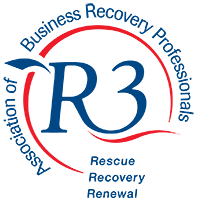In recent years, a mix of economic pressures has driven significant changes in the UK’s insolvency field. From the lingering effects of the COVID-19 pandemic to inflation and interest rate hikes, these challenges have reshaped how businesses approach financial distress and insolvency. Insolvency practitioners have had to adapt to new challenges as solvent and insolvent liquidations take on different characteristics in this altered financial climate.
The impact of the COVID-19 pandemic on insolvency trends
The COVID-19 pandemic initiated an unprecedented economic crisis, and its effects continue to influence insolvency trends. Many businesses struggled to maintain operations as lockdowns and restrictions limited consumer demand and disrupted supply chains. In response, the government introduced support measures such as the Coronavirus Job Retention Scheme (CJRS), bounce-back loans, and business rate reliefs, which offered temporary relief to struggling businesses.
However, these support mechanisms only deferred insolvency for many. As businesses face the challenge of repaying government loans and handling accumulated debts, insolvency practitioners are seeing an increase in companies seeking liquidation or restructuring options. Small to medium enterprises (SMEs), which often lack the capital reserves of larger companies, are particularly vulnerable as they contend with dwindling cash flow and rising operational costs.
Inflation and rising costs
One of the primary drivers of the current insolvency trend in the UK is inflation, which has surged to levels not seen in decades. Rising fuel and energy prices have impacted nearly every sector, making it difficult for businesses to manage costs. Additionally, raw material costs have escalated, affecting manufacturing and construction industries especially hard. Businesses find it challenging to maintain profitability as they struggle to absorb increased costs while avoiding significant price hikes that could deter customers.
For many businesses, particularly in sectors with lower profit margins, the inability to pass increased costs onto customers has led to unsustainable financial pressure. Insolvency practitioners are seeing more cases of cash-strapped companies opting for a cost-effective liquidation route as the pressure of increasing costs makes continued operations untenable.
Interest rate increases and their consequences
The Bank of England has responded to inflationary pressures by raising interest rates to control spending and inflation. While this monetary policy shift aims to stabilise the economy, it also makes borrowing more expensive for businesses. Higher interest rates impact companies with outstanding debts as repayments on loans and credit facilities become increasingly costly. For businesses struggling with cash flow issues, the increased cost of servicing debt exacerbates financial strain, making insolvency more likely.
Moreover, rising interest rates affect business confidence, especially in industries with higher debt levels like real estate and retail. With cash flow under pressure and high borrowing costs, many directors are turning to insolvency solutions to manage liabilities and safeguard personal interests against potential insolvency risks.
Sector-specific challenges and insolvency trends
The impact of economic pressures is not uniform across sectors. Some industries, such as hospitality and retail, were hit particularly hard by the pandemic and now face unique challenges. Hospitality businesses continue to struggle with rising food and utility costs and ongoing labour shortages, forcing them to operate below capacity. Retail businesses, on the other hand, are grappling with reduced consumer spending due to inflation and the cost-of-living crisis, leading to a steady rise in retail insolvencies.
In the construction industry, the high cost of materials, compounded by labour shortages, has led to severe cash flow problems. For developers operating on tight profit margins, these pressures make it increasingly difficult to complete projects on budget, resulting in a rise in insolvencies within the sector.
The role of insolvency practitioners in the current landscape
Insolvency practitioners (IPs) have had to adapt their approach to meet the changing needs of businesses in distress. As insolvency rates increase, practitioners see a rise in solvent and insolvent liquidations. While some companies choose to liquidate solvently due to retirement or strategic restructuring, many others are driven by financial distress to pursue an insolvent liquidation.
Simple Liquidation, for example, specialises in providing direct insolvency services without intermediaries, allowing companies to take a cost-effective approach to liquidation. Practitioners work closely with directors to determine the best course of action, often providing restructuring advice as an alternative to liquidation where possible.
One trend among IPs is the increasing use of Company Voluntary Arrangements (CVAs) to restructure debt and give businesses a chance to survive financial hardship. CVAs can allow a company to continue trading while renegotiating debt with creditors. However, the complexity of arranging a CVA and the need for creditor approval means they are not suitable in all cases, leading many companies to seek simpler liquidation options.
Increasing regulatory oversight
Recent years have seen a push for greater oversight and accountability in the insolvency industry. New measures have been introduced to protect creditors and ensure directors do not abuse insolvency processes, particularly in cases involving ‘phoenixing’ (the practice of closing an insolvent company and reopening a similar business under a new name). In response, the UK government has introduced the Directors’ Disqualification Act 2021, which empowers regulators to disqualify directors who abuse insolvency processes.
This regulatory shift is affecting insolvency trends by increasing scrutiny of directors’ actions and emphasising the importance of professional guidance. Insolvency practitioners like Simple Liquidation, who adhere to high standards and are licensed by the Insolvency Practitioners Association (IPA), provide directors with guidance that complies with regulatory expectations and minimises potential liabilities.
How insolvency trends may evolve in the future
Looking ahead, UK insolvency numbers may continue to change as economic pressures evolve. While inflation and interest rates may stabilise, the effects of the cost-of-living crisis and lingering pandemic-related debt may have long-lasting impacts on business solvency.
One possible trend is an increase in solvent liquidations among businesses seeking to exit the market or restructure without debt complications. For solvent companies choosing to wind down due to shifting market conditions or owner retirement, solvent liquidation remains an attractive, low-cost option.
Another anticipated trend is the growth in demand for restructuring services as companies seek to reorganise and avoid insolvency. With more businesses experiencing financial pressure, insolvency practitioners are likely to play a more prominent role in advising on restructuring and turnaround solutions. For businesses that may have weathered short-term economic difficulties, CVAs or administration procedures could become more common as viable alternatives to liquidation.
Facing the pressure
Insolvency in the UK has been significantly shaped by recent events, with economic pressures forcing businesses to reconsider their financial futures. Rising costs, high interest rates, and sector-specific challenges have made it difficult for many companies to continue operations, leading to an increase in solvent and insolvent liquidations. Insolvency practitioners, such as those at Simple Liquidation, provide essential services that support directors through this challenging process, offering cost-effective liquidation solutions and professional guidance.
As businesses face continued economic uncertainty, directors are encouraged to seek early advice to explore the options available. In a rapidly changing financial environment, experienced insolvency practitioners can offer tailored support, whether that means a structured exit through solvent liquidation or exploring restructuring options. Ultimately, these services can help directors navigate financial distress and achieve the best possible outcomes for their businesses. Get in touch today to find out more.




